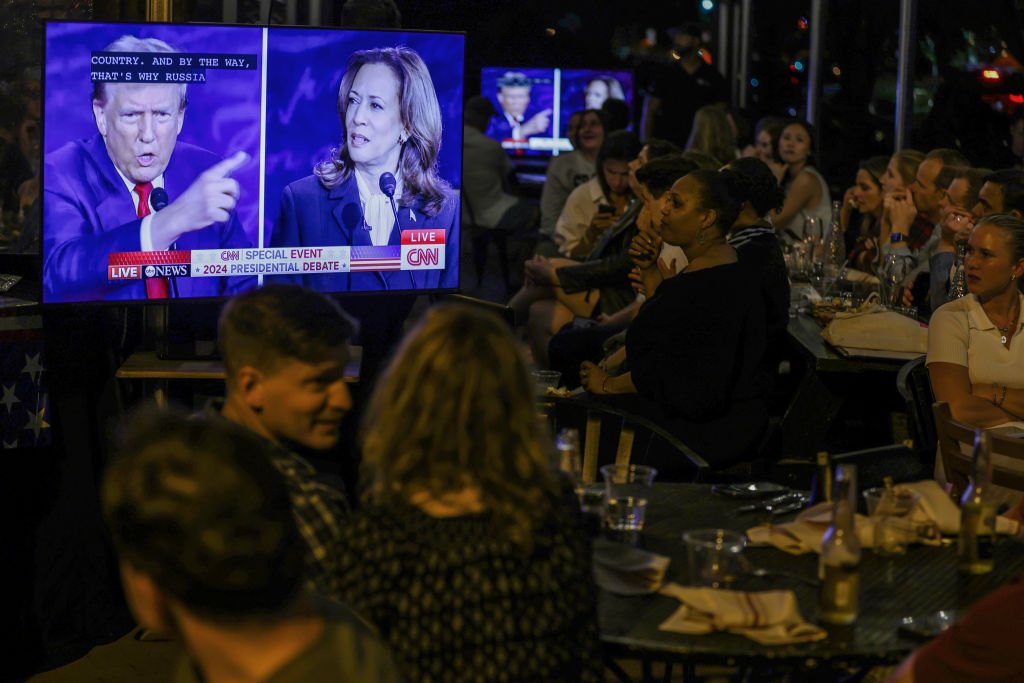2024 election
The Key States and Issues Shaping the Future of the White House Race

The presidential race has taken unexpected twists over the past few months. President Joe Biden has exited the race, allowing Vice President Kamala Harris to secure the Democratic nomination. Meanwhile, former President Donald Trump has faced significant threats, notably an assassination attempt in Pennsylvania and another incident near his golf club in West Palm Beach, Florida.
As Election Day approaches, political analysts anticipate that the campaign will echo the narrow margins of the 2020 contest. Control of the White House may again hinge on a few thousand votes across several competitive states.
“This election will not see a landslide. Victory will be decided in the margins of six to seven swing states,” warned Democratic strategist Donna Brazile during a recent address. Her comments were echoed by Republican strategist Kellyanne Conway, who noted that while circumstances have shifted quickly, the core issues remain consistent.
At the National Conference of State Legislatures in Kentucky, Brazile and Conway outlined the similarities between this election cycle and the last, emphasizing the pivotal role battleground states such as Arizona, Georgia, and Wisconsin will play.
The candidates are investing heavily in these critical states, focusing on economic issues that resonate deeply with voters. Rising prices, immigration, abortion access, and the future of the Supreme Court dominate discussions among constituents.
In battleground states like Michigan and Nevada, the support of labor unions may be decisive for Harris, reflecting a shift in organized labor’s influence in recent years. Conversely, in Georgia and North Carolina, Black and Latino voters hold the potential to swing the election, while suburban working-class voters are under keen observation by both campaigns.
Additionally, the legacy of the previous presidential election lingers. Many officials are grappling with voting rights and ballot counting, amidst concerns that conspiracy theories could hinder election integrity. Past incidents have led to skepticism around electoral security, causing some officials to hesitate in certifying results.
With a neck-and-neck race anticipated, voter turnout will be crucial. In North Carolina, independent voters might play a pivotal role, having historically impacted election outcomes in both directions.
This election primarily centers around economic issues. Trump is criticizing Harris and Biden for high living costs. Polls indicate that while voters are less likely to blame Harris for economic woes compared to Biden, they express greater confidence in Trump’s economic management capabilities.
Harris, in response, is pledging to lower costs of essential goods and services. Her proposal for a “care economy” aims to bolster middle-class families, presenting a stark contrast to Trump’s alleged prioritization of the wealthy.
As both campaigns mobilize their bases, demographic shifts in Georgia indicate a changing political landscape, especially in diverse suburbs that helped push the state closer to a purple hue in recent elections.
Meanwhile, the suburbs of Philadelphia present a complex landscape for campaigns in Pennsylvania, as the region’s demographic shifts have turned once Republican strongholds into battlegrounds. The outcomes in suburbs could greatly influence the final tally, making them crucial for both parties.
Despite their motivations, Democrats are grappling with internal divisions, particularly surrounding the U.S. stance on the Israel-Hamas conflict. Some voters express dissatisfaction with both primary candidates, causing concern about voter turnout and loyalty.
On the other hand, Trump faces challenges stemming from prevalent support for abortion rights, which could impact his appeal in crucial states. Controversies over his administration’s decisions regarding reproductive rights continue to loom large over the campaign.
Political analysts highlight that voter disillusionment is a pervasive issue for both parties. Many Americans remain frustrated with their choices, which may affect overall voter engagement as the election approaches.
This dynamic landscape, coupled with shifting voter sentiments, indicates that the upcoming election may be more contested and complex than ever before. The months ahead will be critical in determining the direction of not only the presidential race but also the broader political landscape.













![Developers (bottom left) envision the oasis depicted in these newly seen sketches across from the casino at John Wayne Parkway and Farrell Road. [City of Maricopa/Vestar]](https://arizonanews.org/wp-content/uploads/2025/05/Rezoning-Greenlit-for-Maricopa-Towne-Center-Amid-Uncertainties-80x80.jpeg)




